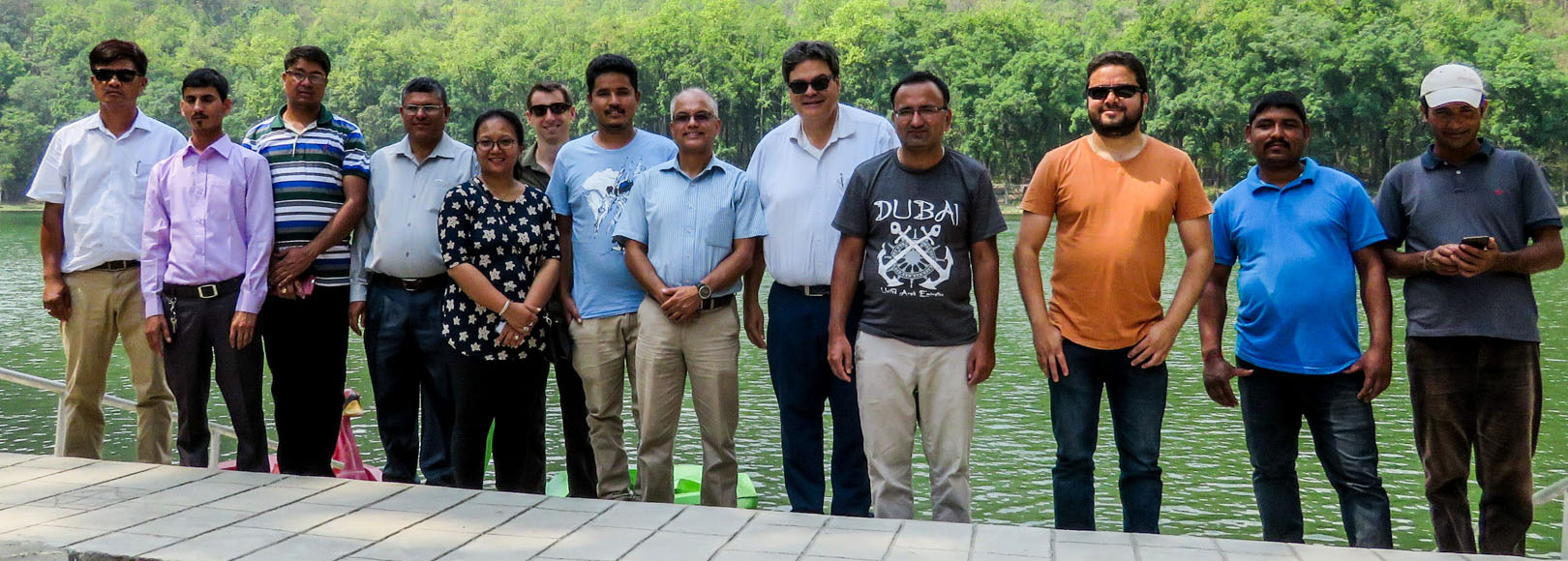
Innovative Cooperative Project Multiplies USAID Water Security Impact in Nepal
Ten USAID implementing partners find success through collaboration around water security with two-year Integrated Water Management Activity .
This year marked the completion of an innovative USAID project aimed at improving cooperation between USAID projects in Nepal around the shared goal of water security. Facilitated by the Sustainable Water Partnership (SWP), which is implemented by Winrock International, the two-year Integrated Water Management Activity (IWMA) worked with 10 USAID projects to improve water security in two target watersheds in western Nepal.
Though Nepal has more than 6,000 streams and rivers, a combination of factors including deforestation, climate change, insufficient water infrastructure and ineffective water management cause the country to suffer from water insecurity.

USAID Nepal has a broad portfolio of activities in which water plays a role, including work on multiple use water systems, disaster risk management, biodiversity, and maternal and child health. Until IWMA, these projects, which are implemented by a diverse group of USAID implementing partners (IPs), had limited collaboration. To change this, IWMA created a five-step water security integration process based on SWP’s Water Security Improvement (WSI) process and the Integrated Watershed Management Framework developed by USAID Nepal’s Social, Environmental and Economic Development (SEED) office. Reorienting collaboration through the lens of water security helped break down silos, enabling IPs to see themselves as complementary parts of USAID Nepal’s broader goals for beneficiaries in the two target watersheds.
IWMA facilitated five workshops with USAID IPs to develop a water security integration plan for each watershed. During the workshops, IPs identified water security risks that they could work together to address. The IPs then designed six specific field-level water security activities, each involving two or more IPs. The activities allowed the IPs to pool resources and knowledge to improve local water security.
For example, the Suaahara II (suaahara means “good nutrition” in Nepali) program recognized that nutrition challenges in a village called Hamtad were linked to poor agricultural practices. The project requested financial and technical assistance from the Promoting Agriculture, Health, and Alternative Livelihoods (PAHAL) project. PAHAL then matched funds from the local ward and community to construct a soil cement water tank as part of a micro-irrigation system.

To compliment the new infrastructure, local beneficiaries received training on water-saving technologies and permagardening. As a result, Suaahara II and its beneficiaries had the resources and tools needed to start improving their nutrition through increased access to irrigation for vegetables and training in climate-smart agricultural techniques.
In another collaboration, the KISAN II project needed a local partner to help extend agricultural input and supply networks to more remote areas. PAHAL and Suaahara II recommended a local farm supply store, called an agrovet, with which both projects had independently collaborated. KISAN II provided a grant which enabled the agrovet to grow its business by including Suaahara II and PAHAL beneficiaries in farmer groups to receive extension services. As a result, local farmers built and diversified their capacity, and the farmer groups increased fresh vegetable yields.

Now, USAID Nepal is taking steps to build on IWMA’s accomplishments. The SEED Office is applying lessons learned and best practices identified by IWMA to improve water security integration within USAID Nepal with practices such as:
- Establishing integration working groups led by the mission;
- Using watersheds as the unit of geographic focus for future water-related projects;
- Prioritizing collaboration with local governments to build their capacity;
- Developing and incorporating water security integration language to be included in future awards; and
- Sharing a record of collaboration activities among IPs to facilitate the design of future integration activities.
To read the final IWMA report, click here.
